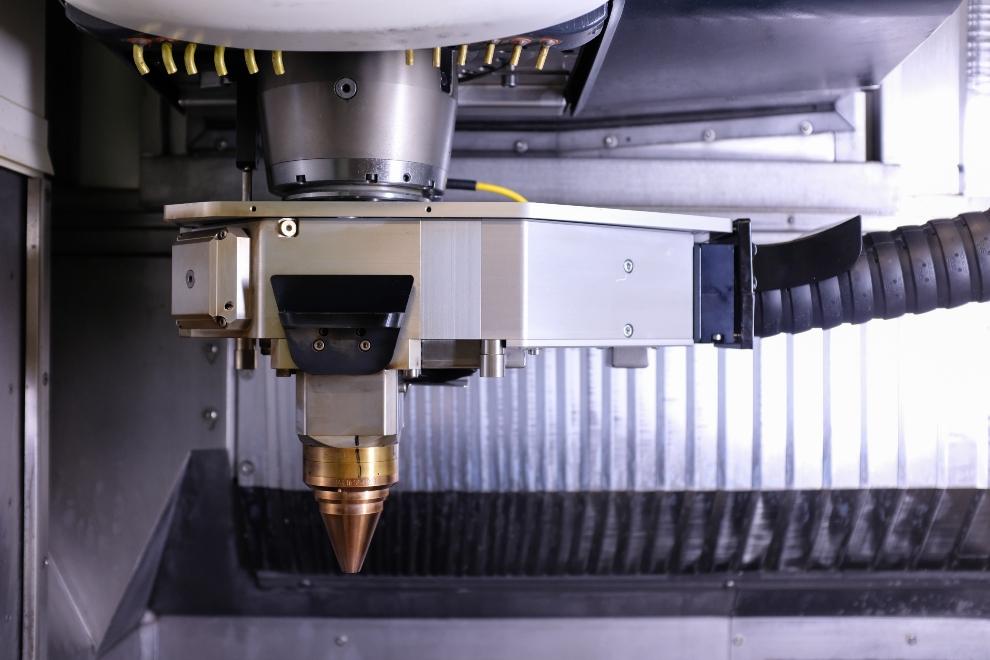- FMA
- The Fabricator
- FABTECH
- Canadian Metalworking
Our Publications
Categories
- Additive Manufacturing
- Aluminum Welding
- Arc Welding
- Assembly and Joining
- Automation and Robotics
- Bending and Forming
- Consumables
- Cutting and Weld Prep
- Electric Vehicles
- En Español
- Finishing
- Hydroforming
- Laser Cutting
- Laser Welding
- Machining
- Manufacturing Software
- Materials Handling
- Metals/Materials
- Oxyfuel Cutting
- Plasma Cutting
- Power Tools
- Punching and Other Holemaking
- Roll Forming
- Safety
- Sawing
- Shearing
- Shop Management
- Testing and Measuring
- Tube and Pipe Fabrication
- Tube and Pipe Production
- Waterjet Cutting
Industry Directory
Webcasts
Podcasts
FAB 40
Advertise
Subscribe
Account Login
Search
Hybrid additive/subtractive manufacturing system cuts energy company’s inventory
A combination 5-axis mill and metal-deposition head makes impellers in days instead of months
- December 26, 2020
- Article
- Additive Manufacturing

An example of the complex geometries that can be achieved with Sulzer's hybrid additive/subtractive manufacturing system. Images: Sulzer
Oil and gas companies carry large inventories of spare parts to minimize downtime, especially when process-critical assets are involved. With so much capital invested in parts, any strategy that lowers inventory without compromising reliability and productivity warrants in-depth examination.
Developing a new technology
The past two years, Chevron has partnered with pump and rotating equipment manufacturer Sulzer to find a way to reduce the oil and gas producer’s spare-parts inventory.
A result of Sulzer’s partnership with Chevron has been the development of a hybrid AM/machining system that significantly lowers the production time needed for critical pump components like impellers. The project offers Chevron the opportunity to reduce lead times for new parts without compromising on quality.
Sulzer Head of Technology for Rotating Equipment Services Charles Soothill said, “Together, the teams have worked to combine the capabilities of 5-axis CNC milling and laser-metal-deposition equipment to create this hybrid manufacturing process. This combination of additive and subtractive elements enables the new process to be quicker because setups are avoided.”
Making an impeller
The Sulzer process starts with a billet of material being loaded into the hybrid machine tool. Then the most complex geometries of the impeller eye are machined. Next, the LMD head adds material, which is finish-machined while the part remains in the cell.
The process of adding material and machining repeats until the impeller is completed. The entire process, which can be finished in days, claims Sulzer, is much quicker than casting a new component; casting typically takes 15 to 20 weeks. The greatly reduced build time means that if a pump in operation needs a new component, a standby pump can be brought online while the new part is manufactured, delivered, and installed in the first pump.
Additionally, the use of milling tools means that the internal hydraulic surfaces have a much higher-quality finish than cast impellers, says Sulzer.
Proving the theory
The hybrid technology was first used to produce the impeller for a chemical processing pump that moves corrosive fluid. Using the original design drawings, a three-dimensional model was fine-tuned and a final set of coded instructions for the hybrid manufacturing machine was generated. Within a few hours, the new impeller had been built and was ready for installation.
The impeller was installed in the pump and tested by Sulzer. Then it was installed on-site, where it has been operating successfully since 2019.
About the Publication
- Podcasting
- Podcast:
- The Fabricator Podcast
- Published:
- 04/16/2024
- Running Time:
- 63:29
In this episode of The Fabricator Podcast, Caleb Chamberlain, co-founder and CEO of OSH Cut, discusses his company’s...
- Trending Articles
- Industry Events
16th Annual Safety Conference
- April 30 - May 1, 2024
- Elgin,
Pipe and Tube Conference
- May 21 - 22, 2024
- Omaha, NE
World-Class Roll Forming Workshop
- June 5 - 6, 2024
- Louisville, KY
Advanced Laser Application Workshop
- June 25 - 27, 2024
- Novi, MI



























